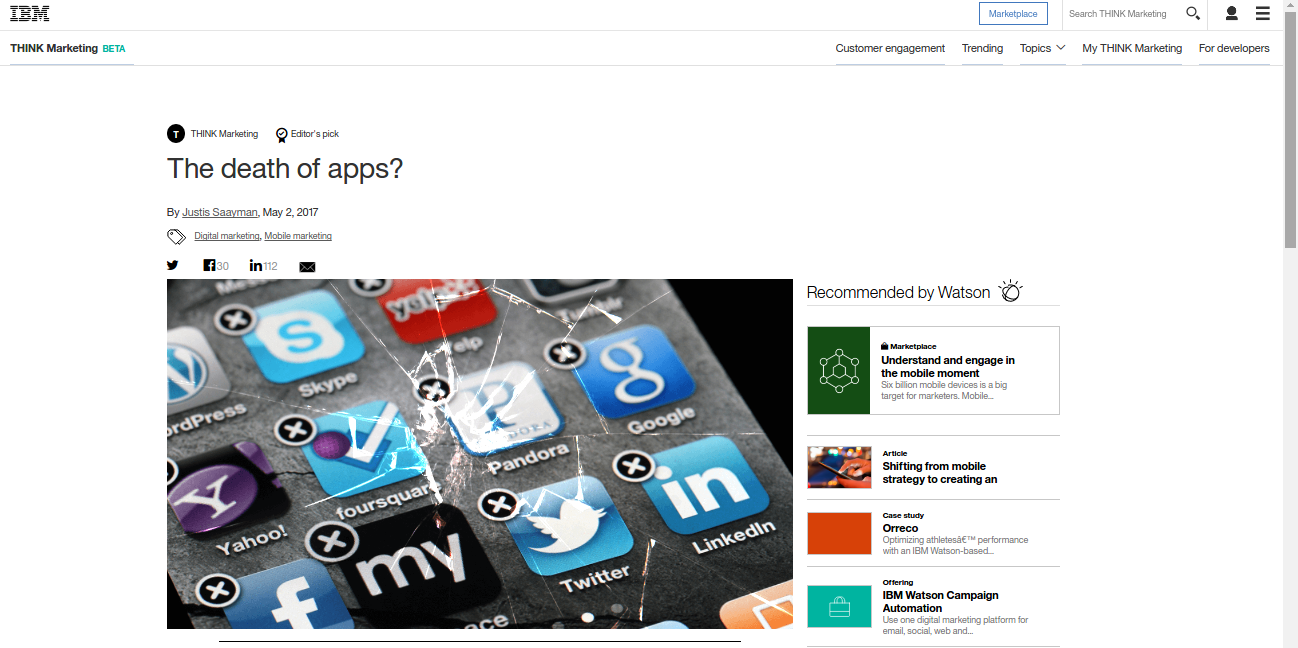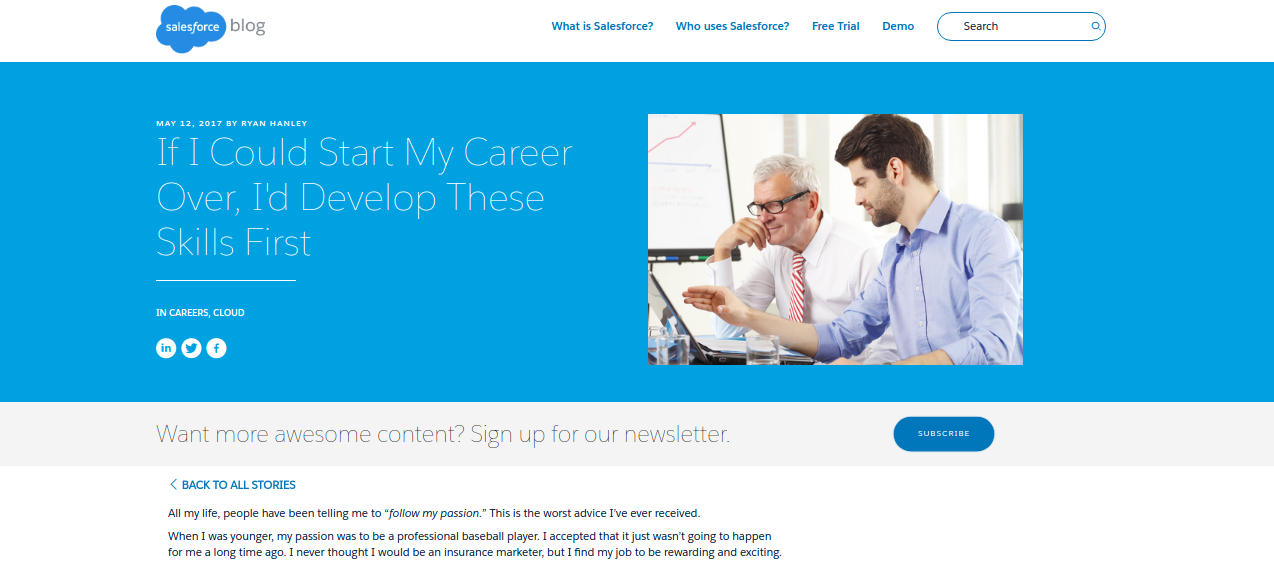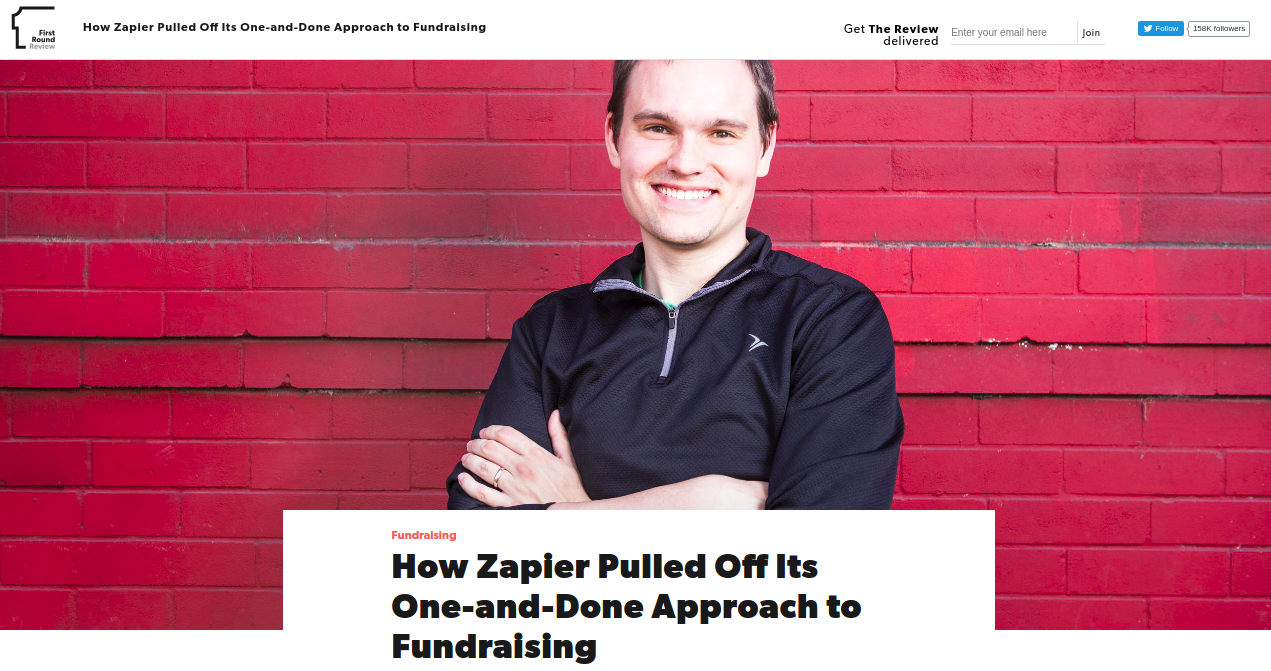Target Takeaway: Know What You Want Your Readers to Feel Before You Start
 Each time you sit down to write a piece of content, you know the topic you want to write about. You probably know who you are writing for. Odds are, you even know the call-to-action that you are going to put in italics at the end. But do you know how you want your reader to feel when they get to the end of your blog, whitepaper, case study, infographic, or article?
Each time you sit down to write a piece of content, you know the topic you want to write about. You probably know who you are writing for. Odds are, you even know the call-to-action that you are going to put in italics at the end. But do you know how you want your reader to feel when they get to the end of your blog, whitepaper, case study, infographic, or article?
No, I’m not talking about feeling something in a sappy ’80s rock ballad sort of way (Click here if you want a time machine to the ’80s) or even a ‘moved to tears’ way. Instead I’m talking about a piece of content that makes you feel relieved because it helped you solve a problem in a personable way. Maybe the content made you laugh. Or perhaps you felt intrigued because you thought about an idea in a different way. And yes, sometimes B2B content is great because we feel emotional as with Salesforce’s Success Stories on clients like (RED).
If you don’t know what you want people to feel before you write the content, then odds are they won’t feel anything. Your reader will go on with their life and never think about your content or your company again. In the end your content have no impact on your reader your brand. You will have wasted your time creating it, your reader wasted their time reading it, and your company will have wasted their money.
The Solution: Name a Target Takeaway Before You Write a Word
The secret is to tie your content to an emotion – called the Target Takeaway. This is the feeling that you want the reader take away from the content. To make this happen, every component of the content – headline, photo, word choice, structure – must tie back to this emotion. Once you have nailed down your takeaway to a single word, you can use it to drive all of the decisions about creating your content.
make this happen, every component of the content – headline, photo, word choice, structure – must tie back to this emotion. Once you have nailed down your takeaway to a single word, you can use it to drive all of the decisions about creating your content.
At first you may struggle to think of emotions that are appropriate for a business environment and will help your reader develop trust in the brand. But once you start thinking about it, there are many different emotions to target, including the many shown on the pretty graphic to the left. Another I thought of after creating the fancy picture is Admiration, which works great in B2B since admiration has a natural pathway to trust.
Unfortunately, you can’t just pick a Target Takeaway based on what you want your audience to feel – well, you can, but it’s not very effective. Instead you need to think about your audience and figure out what emotions are going to have the biggest impact. Emotions are very personal, so it’s important to pick the right one.
While there are some fantastic uses of emotion in B2B content, but not every boss is going to give you the freedom to do something totally creative. And even then, there are some topics that have to be more straightforward in B2B. Right now, I want to keep the focus on how to bring emotion into typical B2B posts so I picked three examples that could have very easily been typical snooze-worthy B2B content. But with a few simple changes that invoke emotion, they went from boring to brilliant
IBM Think Marketing: Death of Apps Blog Post – Intrigue/Curiosity
IBM Think Marketing blog covers marketing and marketing technology, so the people who read it are either tech or marketing people. And a common trait that people in these professions typically share is curiosity, which is an emotion that can lend itself to fantastic content when done right. The post “Death of Apps?” (above) could have very easily been a boring post about Instant Apps. Really boring. A lead explaining what they are, a few paragraphs talking about what WeChat and Google are doing in the space, and then a generic closing that says nothing.
Instead the writer took the angle of predicting something the reader would think unthinkable, using a photo that contributes to the intrigue and then using a unique structure to the article to explain the concept in a way that makes the reader even more curious. These are a few simple changes that even the most traditional marketing department is not likely to object to and the content went from something no one would remember to a noteworthy piece that you are likely to share and talk about.
Salesforce: If I Could Start My Career Over, I’d Develop These Skills First: Introspection
Everyone has things that they would do differently if given the chance and corporate managers/executives (the audience of the Salesforce corporate blog) are no exception. Reading the article entitled “If I Could Start My Career Over I’d Develop These Skills First” has three different impacts (or at least it did on me and my test subject aka my husband). 1. You stop and think about what you would do differently. 2. You realize from reading the authors list of skills that its not too late to develop these traits. 3. You hopefully think of changes you can make to grow your skill set based on either your list, the authors or likely a combo.
In a single word, it makes you become introspective. And most importantly this emotion is carried through the entire post from the headline, the photo (an older man and a younger man) and the introduction – “All my life, people have been telling me to ‘follow my passion.’ This is the worst advice I’ve ever received.” This post also uses a technique that can be very effective for B2B content when used appropriately: writing in first person. No, you don’t want ever post on security and artificial intelligence to delve into personal anecdotes, but first person can be very powerful when used for the right content and is a very easy way to add emotion to a boring topic.
First Round Review: How Zapier Pulled Off Its One and Done Approach to Fundraising: Admiration/Inspired
Profiles are common in B2B content because they can be interesting and inspiring. But they can also be really dry and leave you wondering why you just spent 10 minutes reading about someone you couldn’t care less about. When this happens, it’s almost always because the profile didn’t make you feel a single thing. But when I finished reading First Round Review’s profile of Wade Foster, I felt both admiration towards him and I was inspired to do bigger things with my own business. Admiration is an especially powerful emotion to use as a Target Takeaway because the reader then trusts the advice given by the person profiled and begins to build trust in the brand as well.
The feeling of admiration begins as soon as you see the headline “How Zapier Pulled Off Its One-and-Done Approach to Fundraising” and continues when you see the photo of Foster, who looks like a typical and likable guy. The opening draws you in by explaining that he accomplished this without some of the advantages that other tech giants had growing up in California. “Sand Hill Road. Infinite Loop. University Ave. There are a lot of iconic addresses in tech, most of them in Silicon Valley. But for his inspiration, Zapier cofounder Wade Foster looks to the 65203 — his hometown of Columbia, Missouri.” The rest of the story—including casual language, provocative quotes, solid advice, and interesting details about his business—only adds to your feeling of admiration. Because so much web content is short blog posts, the long form magazine style of this piece stands our and gives it even more weight
The beauty of the Target Takeaway is that it can be used for content where you have tons of creative freedom as well as posts where you need more straightforward content. As the quote from Laurence J. Peter goes, “If you don’t know where you’re going you’ll probably end up somewhere else.” It’s just the same with content. If you don’t know what you want your reader to feel when they read your content, then odds are they will feel nothing.
At the end of May, I am holding a random drawing for a $50 Amazon Gift Card. To be entered in the drawing, subscribe (box at the right) to my Boring to Brilliant B2B blog. You will also get one additional entry into the drawing for every relevant comment (no spam) you post to the B2B blog by 11:59 pm ET. May 31st. Note that comments on my Content Marketing Writer blog do not count towards this contest.
What do you think about the Target Takeaway concept? Have you used a similar strategy in your content?





I absolutely love the direction you and other thought leaders in the B2B writing world are taking– an audience-centric approach that seeks to engage and stimulate the reader, and not fill space with technical jargon just because it sounds impressive. It’s much more effective to communicate clearly, thoughtfully and personally.
Looking forward to reading more posts!
Thank you Pamela, I look forward to writing these posts as well. If you have any topics that you want to see, feel free to email or post.
I work for a financial services company and I’m currently in charge of developing an editorial guidance document on my company’s voice. So much of what we write includes a plug about our brand values and the benefits of investing with us, but I agree that benefits can only go so far in attracting readers.
I like the Target Takeaway concept because many people invest for emotional reasons, such as having the resources to care of loved ones, achieving a level of comfort and financial security, and freedom to live a dream retirement. But so far, I’ve only seen maybe one or two pieces that incorporate consistent emotion from beginning to end. This is something we need to work on. I’m going to think about this further to see how I can incorporate this element into my guidance document. Thanks!
Hi Greg, Thanks so much for reading! I’m so glad you found my blog. I agree – financial services is a perfect industry for the Target Takeaway to be impactful because pretty much everything about money is tied to an emotion. Be sure to subscribe since pretty much this entire blog will tie back to the Target Takeaway concept and how to use emotion in all parts of content.
We are going to talk about everything from creating headlines, word choice, topics, layout, type of content, pictures, word choice, etc – and how to create each of these elements in a way that ties back to your target takeaway so that the emotion goes from beginning to end. I’m also going to writing about how to add it to personas and editorial calendars as well as how to get your bosses to agree.
Are there any specific challenges or questions that you have? I want to make sure that my blog is providing relevant and interesting information, so please feel free to post any topics that you want to see!
Thanks again for reading and looking forward to having you a part of this blog community.
Since I am revamping my business to do more B2B I want to make sure there’s plenty of sizzle in my offerings. I have avoided some of the work as it is mind deadening. You’ve given me some great direction to use as a guideline in Target Takeaway. Thanks!
Congratulations Jennifer! I was planning on skimming this and ended up reading to the last word. You made me feel curious and inspired! BTW, can you add social icons to make tweeting/sharing easier? Thanks for writing!